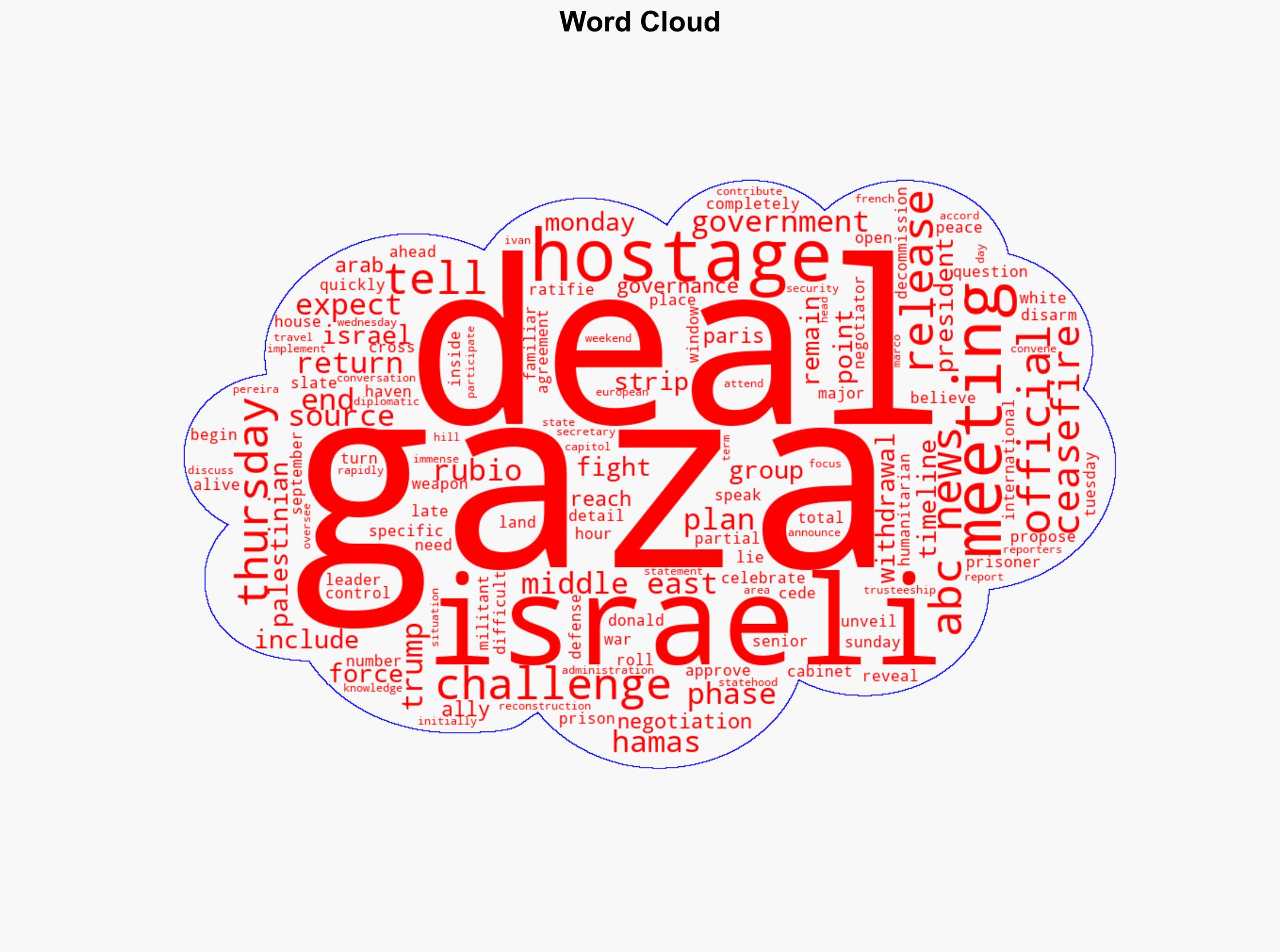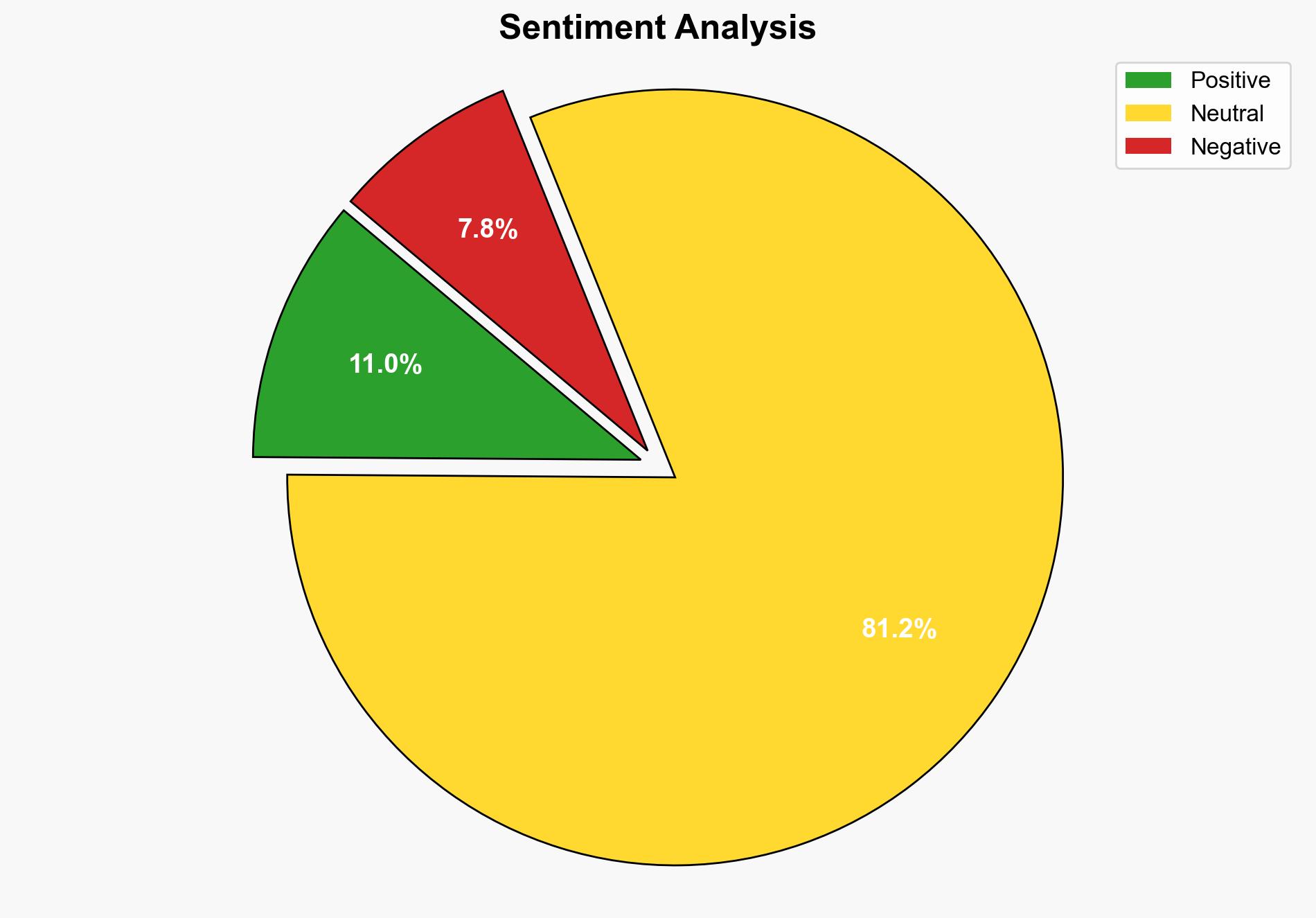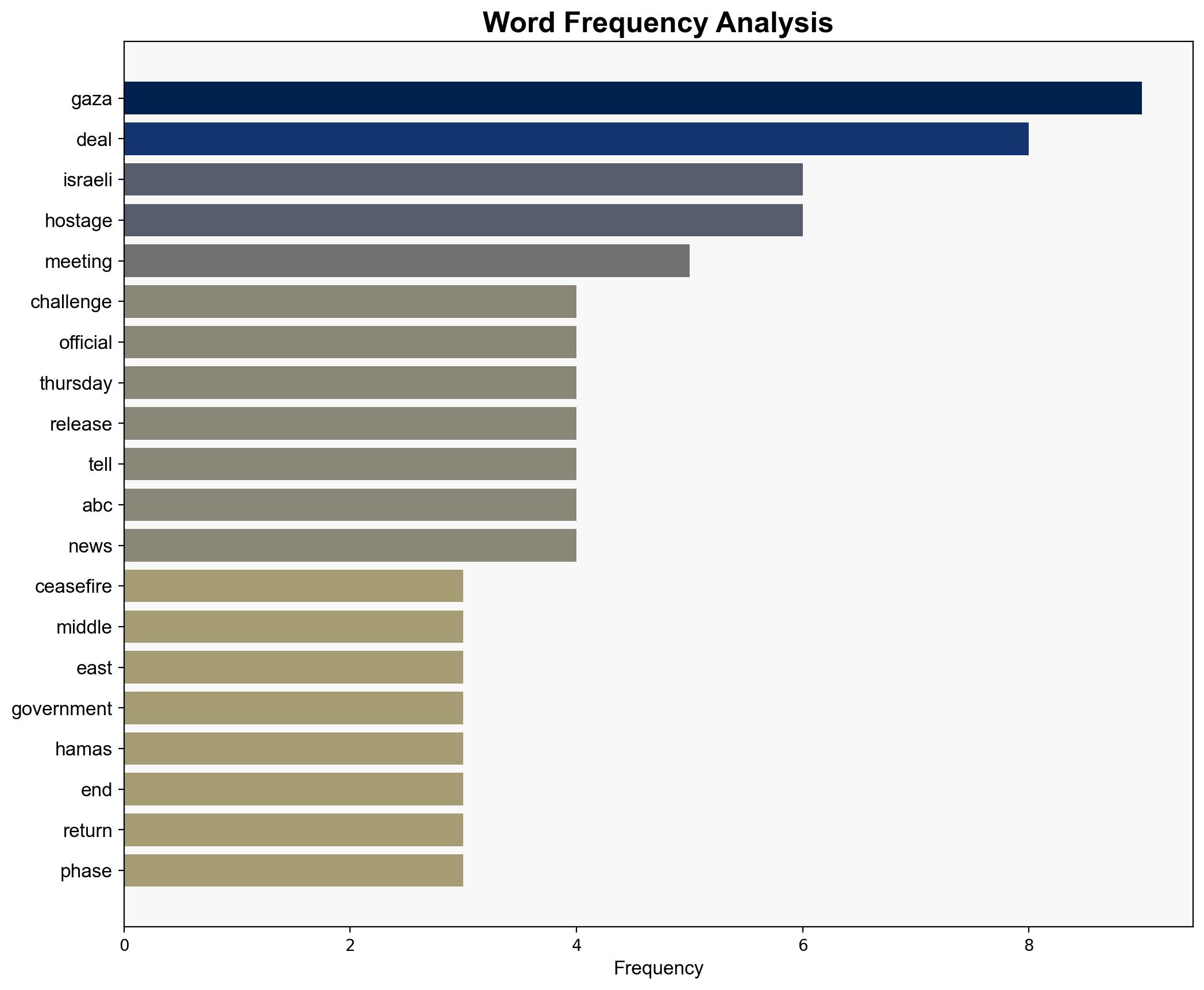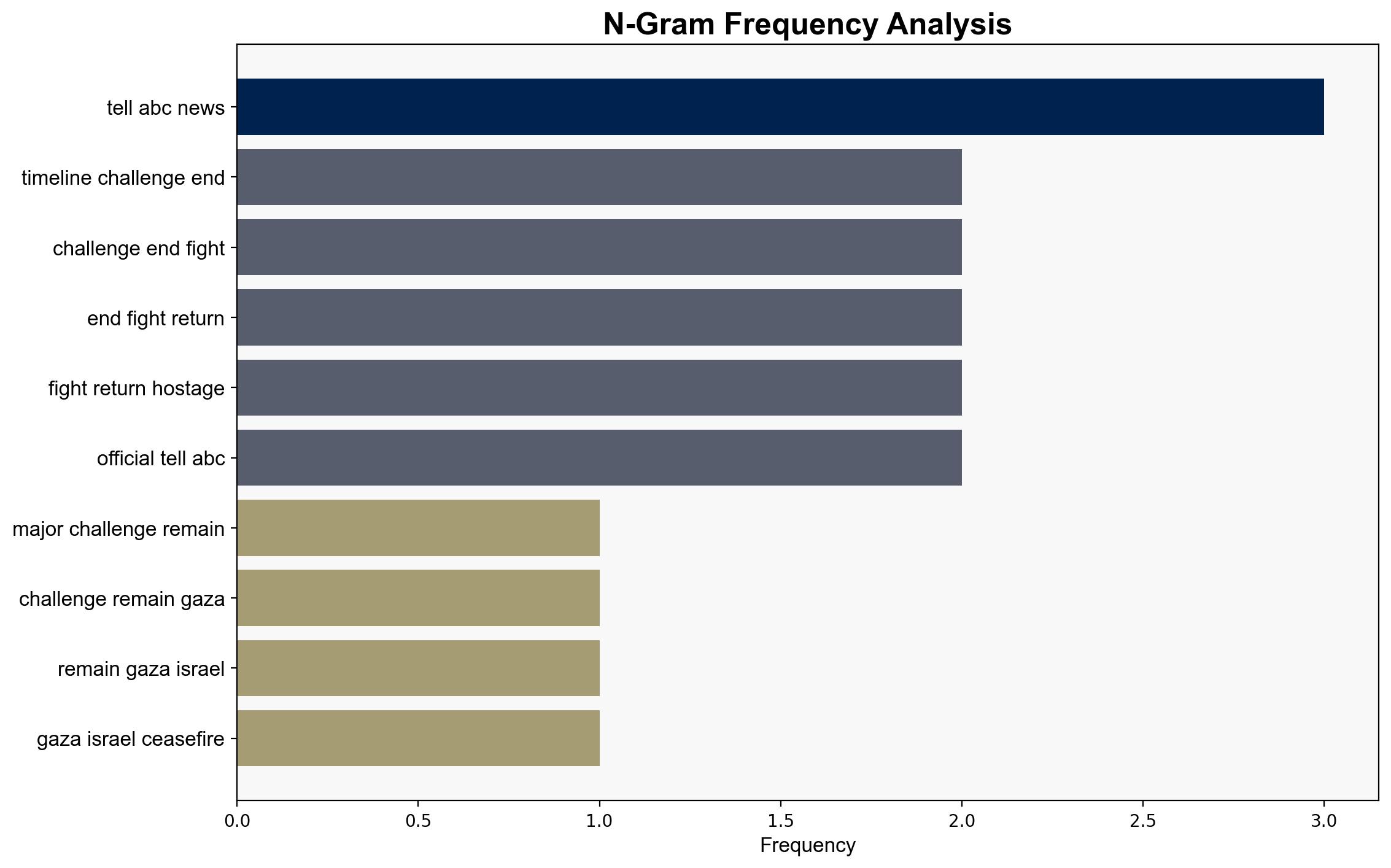Major challenges remain for Gaza and Israel if ceasefire deal rolls out – ABC News
Published on: 2025-10-09
Intelligence Report: Major challenges remain for Gaza and Israel if ceasefire deal rolls out – ABC News
1. BLUF (Bottom Line Up Front)
The most supported hypothesis is that the proposed ceasefire deal between Israel and Hamas will face significant implementation challenges, leading to a prolonged and unstable peace process. Confidence level: Moderate. Recommended action: Engage in multilateral diplomatic efforts to ensure the ceasefire terms are clear, enforceable, and supported by key regional and international stakeholders.
2. Competing Hypotheses
Hypothesis 1: The ceasefire deal will successfully lead to a stable peace process, with both sides adhering to the terms, including the release of hostages and withdrawal of Israeli forces.
Hypothesis 2: The ceasefire deal will face significant obstacles, resulting in a fragile and temporary cessation of hostilities, with potential for renewed conflict.
Using ACH 2.0, Hypothesis 2 is better supported due to the lack of detailed implementation plans, historical precedent of failed agreements, and the complexity of disarming Hamas and establishing international governance in Gaza.
3. Key Assumptions and Red Flags
Assumptions: Both parties are genuinely committed to peace and willing to make necessary concessions. International stakeholders will effectively support and enforce the agreement.
Red Flags: Absence of detailed timelines and mechanisms for disarmament and governance transition. Potential for internal dissent within Hamas and Israeli political factions. Lack of clarity on the role and authority of international trusteeship.
4. Implications and Strategic Risks
The ceasefire’s success hinges on overcoming historical distrust and logistical challenges. Failure could lead to renewed violence, regional instability, and humanitarian crises. Economic impacts include disrupted trade and reconstruction costs. Geopolitical risks involve strained relations among regional powers and potential shifts in alliances.
5. Recommendations and Outlook
- Facilitate international dialogue to clarify and enforce ceasefire terms, involving key regional actors and international organizations.
- Prepare contingency plans for humanitarian aid and conflict escalation scenarios.
- Best Case: Successful implementation leads to long-term peace and regional stability.
- Worst Case: Breakdown of the ceasefire results in intensified conflict and regional destabilization.
- Most Likely: A fragile ceasefire with intermittent violations and slow progress on key issues.
6. Key Individuals and Entities
Donald Trump, Marco Rubio, Hamas, Israeli government, European and Arab allies.
7. Thematic Tags
national security threats, regional focus, counter-terrorism, diplomatic negotiations




